To learn how to compose and understand puzzles, it is worth understanding what they are.
Word "rebus" of Latin origin (Latin rebus, with the help of things, “Non verbis sed rebus” - “Not with words, but with the help of things”). The rebus originated in France in the 15th century, and the first printed collection of rebuses, published in this country in 1582, was compiled by Etienne Taboureau. Over the time that has passed since then, the technique of composing rebus problems has been enriched with many different techniques.
So, rebus- This is one of the types of puzzles, a riddle to decipher words. Encrypted according to certain rules in a rebus there can be not only a single word, but also a proverb, a saying, a quote, a riddle, and even an entire short story. Words and phrases in the rebus are depicted in the form of pictures, letters, numbers, notes and other various symbols, the number of which is not limited. Solving a rebus is a whole science. When solving a rebus, you need to write down all the signs in the form of a meaningful word or sentence. Although there are several types of puzzles (literary, mathematical, musical, sound, etc.), there are some general rules for composing and solving them.
example of a rebus
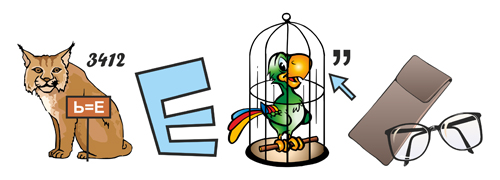
GENERAL RULES FOR SOLVING PUZZLES
A word or sentence is divided into parts that can be depicted in the form of a picture or any sign. The rebus is read from left to right, less often from top to bottom. Punctuation marks and spaces are not taken into account in the rebus. If there is one word in the rebus, then it should, as a rule, be a noun, and in the singular and in the nominative case. Deviation from this rule must be specified in the terms of the rebus. If a sentence is made (a proverb, an aphorism, etc.), then, naturally, it can contain not only nouns, but also verbs and other parts of speech. In this case, the terms of the rebus must contain the appropriate phrase (for example: “Guess the riddle”). A rebus must have a solution, and, as a rule, only one. The ambiguity of the answer should be specified in the conditions of the rebus. For example: “Find two solutions to this puzzle.” The number of techniques and their combinations used in one rebus is not limited.
PUZZLES IN PICTURES
The simplest option is when the rebus consists of two pictures, which will help you create a new word. The names of the objects depicted in the rebus should be read in the nominative case, singular or plural if several objects are depicted.
rebus 1

FOB + WINDOW = FIBER
rebus 2
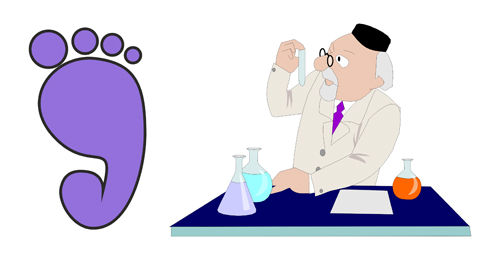
TRAIL + EXPERIENCE = TRAILER
rebus 3

EYE + FACES = OUTDOORS
From the last example it is clear that the picture in the rebus can have more than one name (eye and eye, bees and swarm, etc.); or the image may have a general or private name (bird - general name; swift, swallow, chicken - private name). If the depicted object has two meanings, then logically you need to determine the appropriate one. This is the most difficult thing about puzzles.
If the picture upside down, this means that the word is read “back to front”.
rebus 4
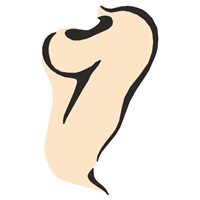
Inverted NOSE = SLEEP
If to the right or left of the picture there is one or more letters- this means that these letters should simply be added. Sometimes they are preceded by a “+” sign. Sometimes the desired object in the picture is indicated by an arrow.
rebus 5
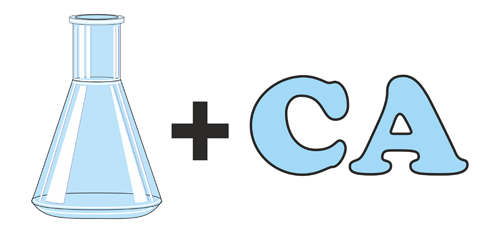
FLASK + SA = SAUSAGE
rebus 6
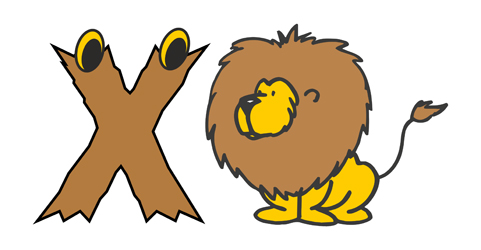
Letter X + LEV = STORY
PUZZLES WITH COMMA
Commas to the right or left of the picture means that in the word guessed using the picture you need to remove as many letters as there are commas. In this case, commas in front of the picture indicate how many letters need to be removed at the beginning of the hidden word, commas at the end of the picture indicate how many letters need to be removed from the end of the word. Sometimes commas to the left of the image are drawn upside down, although this does not play a fundamental role.
rebus 7

VOL K - K = VOL
rebus 8
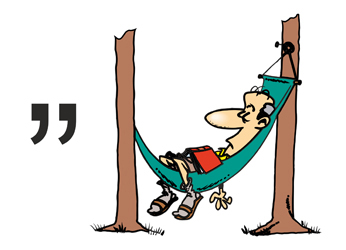
GA MAC - GA = MAC
rebus 9

BA SLAVE AN - BA - AN = SLAVE
The arrow pointing to the left, shown above the picture, indicates that after the word has been deciphered, it must be read backwards.
rebus 10
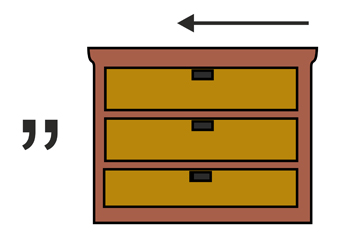
DRESSER - KO, read from right to left = HOUSE
PUZZLES WITH LETTERS AND NUMBERS
If it is above the picture crossed out letter, and there is another one next to it, then this letter in the word needs to be changed to the indicated one. If one or more letters are simply crossed out, then they need to be removed from the word. The "=" sign also serves to replace one of the letters with another.
rebus 11
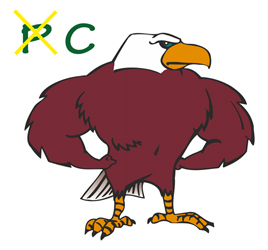
O R YOL = DONKEY
rebus 12
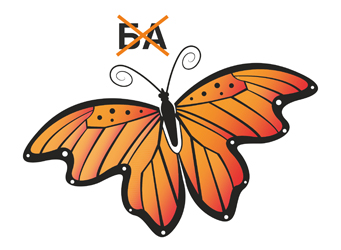
BA BARREL - BA = BARREL
rebus 13
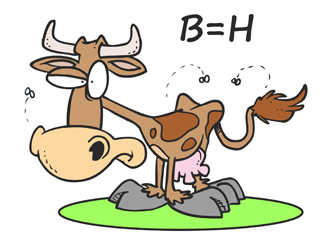
KORO VA = CORONA
If the crossed out letter(s) stands as an independent figure, then it must be read with the addition of the particle “not”.
rebus 14

NOT TEACHING
Numbers can be used instead of pictures. If part of a word in a rebus is represented by a number, then the number is pronounced as a numeral.
rebus 15

Number SEVEN + letter I = FAMILY
rebus 16

Number STO + letter L = TABLE
We keep in mind that a number can have more than one name.
rebus 17

ONCE + FORK = FORK
rebus 18
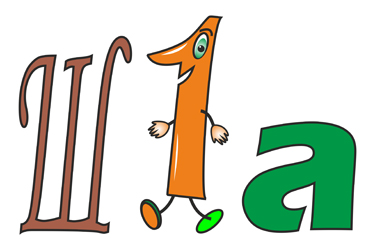
Letter Ш + KOL + letter A = SCHOOL
rebus 19
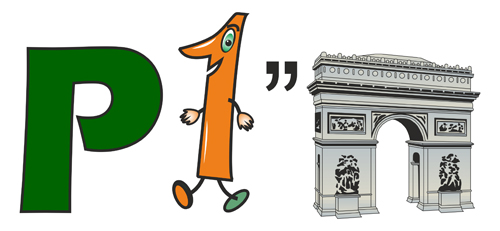
Letter P + ONE + AR KA = MOLE
rebus 20
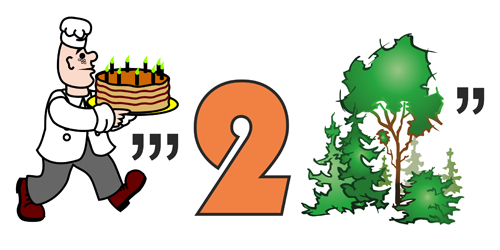
BY VAR + number TWO + L EC = BASEMENT
Some identical letters or other images in a row means that you need to try to count them.
rebus 21
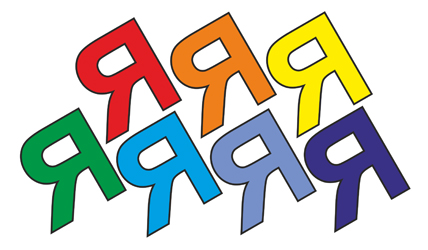
SEVEN letters I = FAMILY
rebus 22
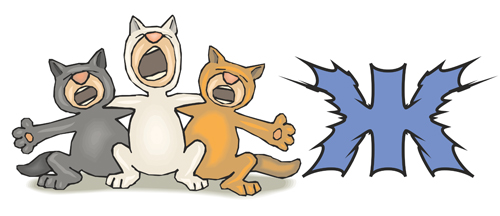
THREE CATS + letter F = KNITWEAR
rebus 23

A PAIR of letters D = PARADE
Numbers next to the picture serve to number letters in a word. The number indicates the place of the letter in a given word, and the order in which the numbers are written determines the new place of this letter.
rebus 24
PINE = PUMP
rebus 25
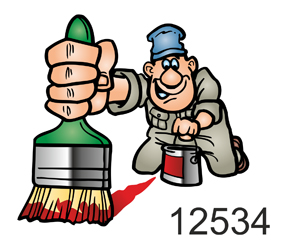
PAINTER = GAUGE
If there are fewer numbers indicated than letters in the hidden word, this means that only the specified number of letters must be selected from the hidden word.
rebus 26
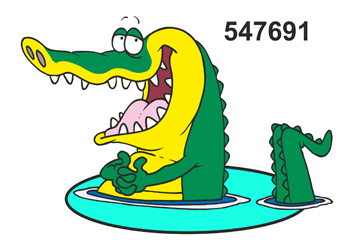
A LL IGAT O R = GUITAR
The use of crossed out numbers means that the corresponding letters must be removed from the hidden word.
rebus 27
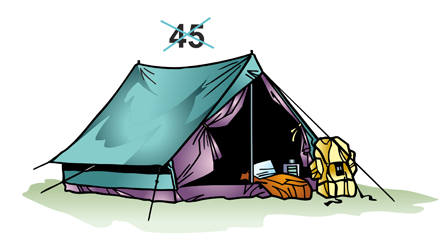
PAL AT KA = STICK
If next to the picture there are two numbers with arrows pointing in different sides, which means that in the word the letters indicated by the numbers must be swapped.
rebus 28

Z A M OK = Smear
Roman numerals may also be used.
rebus 29
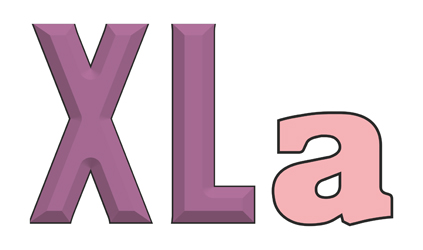
Forty A = FORTY
The use of fractions is not excluded. When a fraction is used in a puzzle, it is solved as "NA"(divide by). If the rebus uses a fraction with a denominator of 2, then it can be solved as "FLOOR"(half).
rebus 30
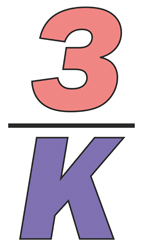
Z divided by K = SIGN
rebus 31
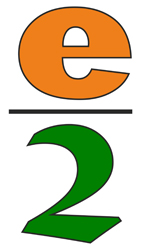
Gender of the letter E = FIELD
Crossed out sign "=" between the pictures should be read as "NOT".
rebus 32
And not Y = FROST
PUZZLES BY THE TYPE “LETTERS IN A LETTER”, “LETTERS ON OR UNDER A LETTER”
Often in puzzles they draw letters placed in an unusual angle relative to each other (one inside the other, one under or above the other, one running towards the other, one coming out of the other, etc.). This means that it is necessary to describe a picture or letter combinations using prepositions and conjunctions: “I”, “B”, “K”, “U”, “C”, “FOR”, “FROM”, “ON”, “PO” , "BEFORE" and others.
If objects, numbers or letters are depicted one within the other, then their names are read with the addition of a preposition "IN" before or between titles.
rebus 33

In the letter O the letter Z = WHO
rebus 34
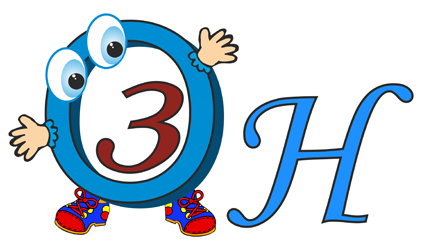
Letter Z in letter O + letter N = RINGING
If one object is depicted behind another, then their names are read with the addition of a preposition "BEFORE" or "FOR".
rebus 35
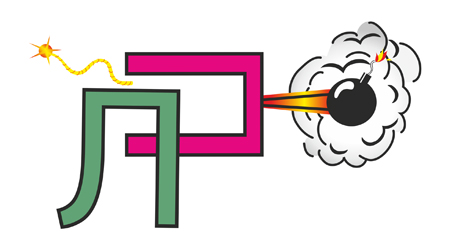
Behind the letter L is the letter P = VALLEY
Usage horizontal line between pictures, letters or numbers placed one below the other means the use of prepositions "NA", "OVER", "UNDER".
rebus 36

On the letter C the letter T = NAST
rebus 37
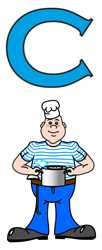
Under the letter C kok = JUMP
rebus 38
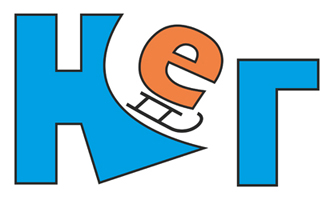
From the letter N to the letter E + letter G = SNOW
Who among us is not familiar with puzzles? These entertaining encryptions are familiar to everyone, young and old. In puzzles, words are encrypted using a sequence of pictures and various symbols, including letters and numbers. The word "rebus" is translated from Latin as "with the help of things." The rebus originated in France in the 15th century, and the first printed collection of rebuses, published in this country in 1582, was compiled by Etienne Taboureau. Over the time that has passed since then, the technique of composing rebus problems has been enriched with many different techniques. To solve a rebus, it is important not only to know what is drawn, but also to take into account the location of the drawings and symbols relative to each other, and this is achieved with practice. There are some unspoken rules by which puzzles are composed, and it is easier to solve them using the same rules, and the rules are as follows:
General rules for solving puzzles
A word or sentence in a rebus is divided into parts, which are depicted as a picture or symbol. The rebus is always read from left to right, less often from top to bottom. Spaces and punctuation marks are not read. What is drawn in the pictures in the rebus is read in the nominative case, usually in the singular, but there are exceptions. If several objects are drawn, an arrow indicates which part of the entire image is used in this rebus. If you think of not one word, but a sentence (proverb, catchphrase, riddle), then in addition to nouns it contains verbs and other parts of speech. This is usually specified in the task (for example: “Guess the riddle”). A rebus must always have a solution, and only one. The ambiguity of the answer should be specified in the conditions of the rebus. For example: “Find two solutions to this puzzle.” The number of techniques and their combinations used in one rebus is not limited.
How to solve puzzles from pictures
Name all objects sequentially from left to right in the nominative singular case.
Answer: trail experience = tracker

Answer: ox window = fiber
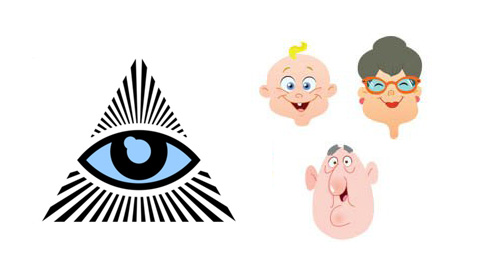
Answer: eye of the face = outskirts
If an object is drawn upside down, its name should be read from right to left. For example, “cat” is drawn, you need to read “current”, “nose” is drawn, you need to read “dream”. Sometimes reading directions are shown with an arrow.
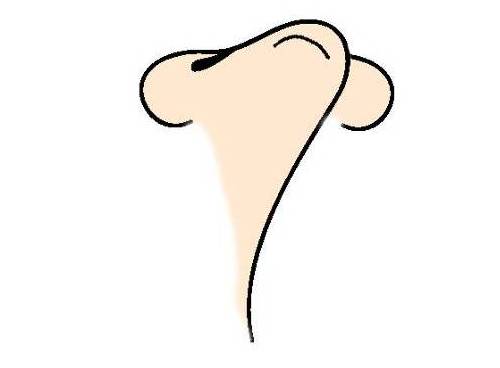
Answer: sleep
Often an object drawn in a rebus can be called differently, for example “meadow” and “field”, “leg” and “paw”, “tree” and “oak” or “birch”, “note” and “mi”, in such cases, you need to select a suitable word, such that the rebus has a solution. This is one of the main difficulties in solving puzzles.
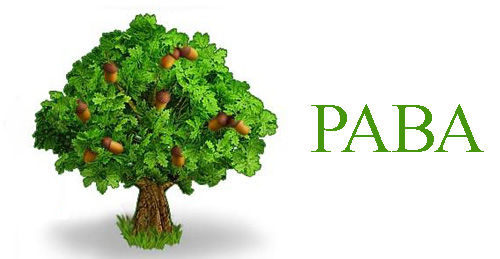
Answer: rava oak = oak grove
How to solve puzzles with commas
Sometimes the name of the depicted object cannot be used in its entirety and it is necessary to discard one or more letters at the beginning or end of the word. Then a comma is used. If the comma is to the left of the picture, the first letter of its name is discarded; if it is to the right, the last letter is discarded. How many commas are there, so many letters are discarded.
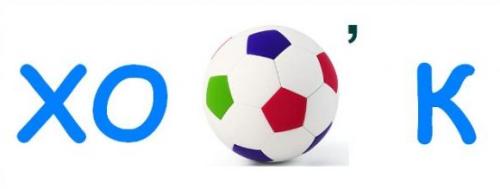
Answer: ho ball k = hamster
For example, 3 commas and a “feeder” are drawn, you only need to read “fly”; “sail” and 2 commas are drawn, you only need to read “steam”.
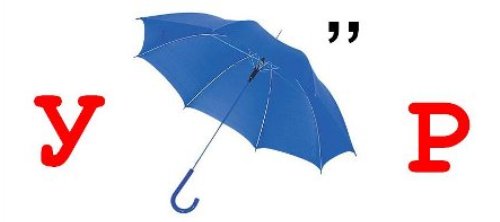
Answer: umbrella p = pattern
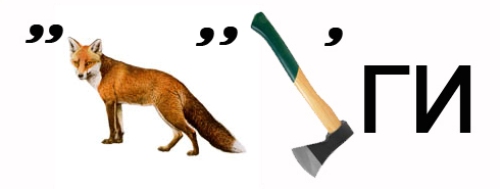
Answer: li sa to por gi = boots
How to solve puzzles with letters
Such letter combinations as before, above, on, under, behind, at, y, in, as a rule, are not depicted in rebuses with a picture, but are revealed from the corresponding position of the letters and pictures. Letters and letter combinations with, to, from, from, by, and are not shown, but the relationships of letters or objects, or direction are shown.
If two objects or two letters, or letters and numbers are drawn one inside the other, then their names are read with the addition of the preposition “in”. For example: “in-oh-yes”, or “in-oh-seven”, or “not-in-a”. Different readings are possible, for example, instead of “eight” you can read “seven-v-o”, and instead of “water” - “yes-v-o”. But such words do not exist, so such words are not a solution to the rebus.
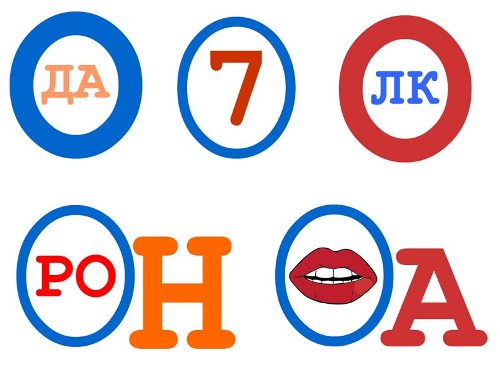
Answers: v-o-yes, v-o-seven, v-o-lk, v-o-ro-n, v-o-rot-a
If one object or symbol is drawn under another, then we decipher it by adding “on”, “above” or “under”, you need to choose a preposition according to its meaning. Example: “fo-na-ri”, “pod-u-shka”, “over-e-zhda”.
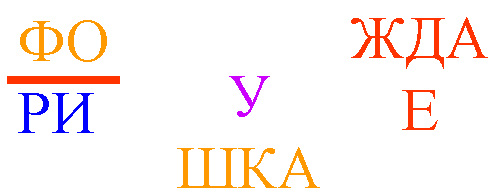
Answers: fo-na-ri, pod-u-shka, na-e-zhda
If behind a letter or object there is another letter or object, then you need to read it with the addition of “for”. For example: “Ka-za-n”, “za-ya-ts”.
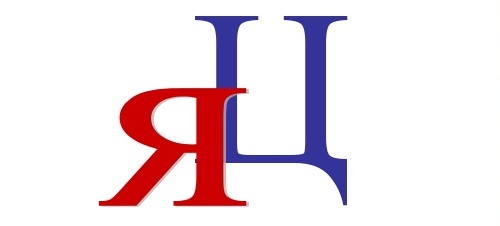
Answer: for-i-ts
If one letter lies next to or leans against another, then read with the addition of “u” or “k”. For example: “L-u-k”, “d-u-b”, “o-k-o”.
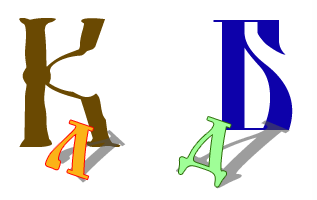
Answers: onion, oak
If a letter or syllable consists of another letter or syllable, then read with the addition of “from”. For example: “iz-b-a”, “b-iz-on”, “vn-iz-u”, “f-iz-ik”.
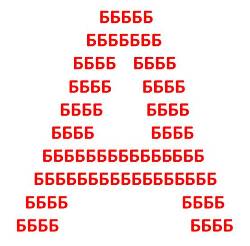

Answers: hut, bison
If another letter or syllable is written over the entire letter, read with the addition of “by”. For example: “po-r-t”, “po-l-e”, “po-ya-s”. Also, “by” can be used when one letter with legs runs over another letter, number or object.

Answer: Poland
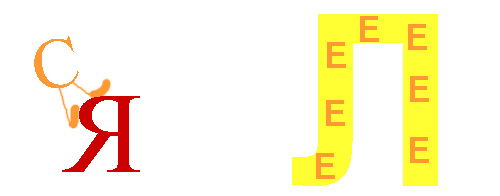
Answers: belt, field
If an object is drawn, and a letter is written next to it and then crossed out, this means that this letter must be eliminated from the word. If there is another letter above the crossed out letter, this means that you need to replace the crossed out letter with it. Sometimes in this case an equal sign is placed between the letters.

Answer: manhole
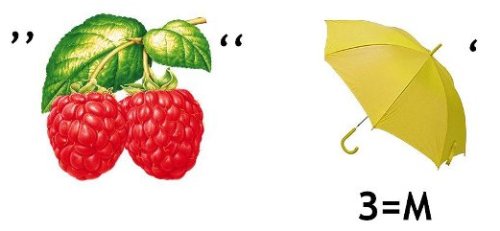
Answer: raspberry z Mont = lemon
How to solve puzzles with numbers
If there are numbers above the picture, this is a hint in what order you need to read the letters from the name of the object. For example, 4, 2, 3, 1 means that the fourth letter of the name is read first, then the second, followed by the third and first.
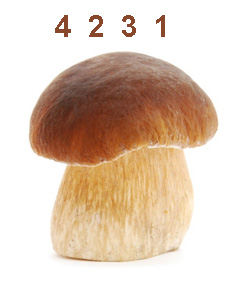
Answer: brig
The numbers can be crossed out, which means you need to discard the letter corresponding to this order from the word.
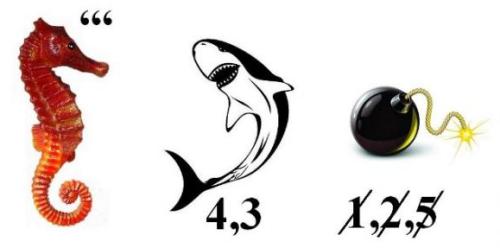
Answer: skate ak LUa bo mba = Columbus
Quite rarely, the action of a letter is used in rebuses - runs, flies, lies; in such cases, the corresponding verb in the third person of the present tense must be added to the name of this letter, for example “u-runs”.
How to solve puzzles with notes
Often in puzzles, individual syllables corresponding to the names of notes - “do”, “re”, “mi”, “fa”... are depicted with the corresponding notes. Sometimes the generic word "note" is used.

Notes used in composing puzzles
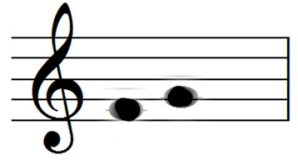
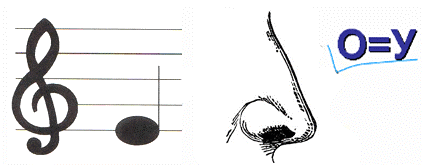
Answers: beans, minus
From early childhood we solve puzzle games, even sometimes without noticing it. From birth, children are taught to play correctly, so that this has a beneficial effect on the further development of not only physical, but also mental functions. Games involving solving puzzles are suitable for developing logic and intelligence. These ancient puzzles are very popular among children. They are published in print editions for children, which in turn game form You can present it as a game.
The name itself has Latin roots and means thing. That is, the representation of words with drawings, images of objects, animals, and so on. In those distant times, when there was no written language, people communicated in sign language. In ancient Egypt, hieroglyphic language with images was used for writing.
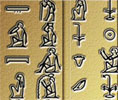
Everything on the walls of the pyramids is covered with similar hieroglyphs. To this day, scientists solve these mysteries. Today they have migrated to the status of games, which both adults and children enjoy with enthusiasm. You can download a lot of these toys on the Internet, as well as play for free online. These puzzles, aimed at the younger generation, can be printed out and solved with your children.
In the 16th century, puzzles appeared in France, tied to a play on words, in which spelling did not play any role, for example, a hundred, a mug - the answer is a watchman. Subsequently, pictures began to be added to the words, which slightly changed their rules. By the end of the 16th century, collections appeared, published in printed editions and having a resounding success.
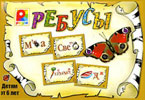
The first mention of them in Russia was in 1845, and in 1881 a printed magazine of the same name began to be published, which was published until 1918. During the Soviet period they did not cease to be popular. After the war, children's versions began to be published in the USSR. Publications for children are published and puzzles are published in them. Thus, with small steps through history, the rebus has reached the present day. Now they are extremely popular among people of all ages, including children. A huge number of them can be downloaded from the Internet or from us, absolutely free.
On our website we have posted and will continue to post children's puzzle games online in the form of a carousel, and full version can be downloaded from the link below.
A child who decides to solve a puzzle asks the question: how to solve them? There are rules for solving this. Here I will describe the rules that are used when compiling them for children.
How to solve them. Basic rules for beginners.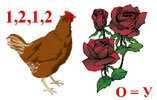
This is where the basic rules for solving puzzles for children end. There are more complex rules, but they are used for more complex tasks. You can come up with simple and basic options for your children yourself. Everything will depend on your ingenuity.
On our website we present puzzle games free for children. They can be downloaded and then printed.
Here you can download and then print the above-mentioned puzzles for children.



